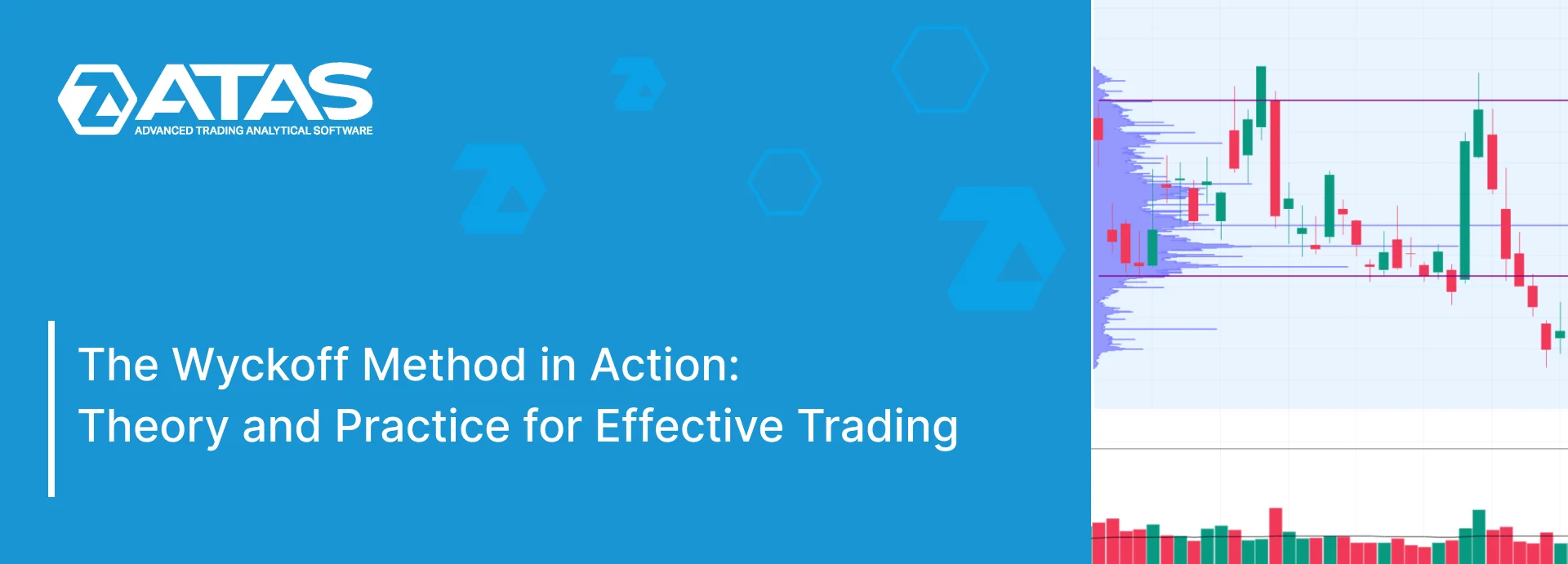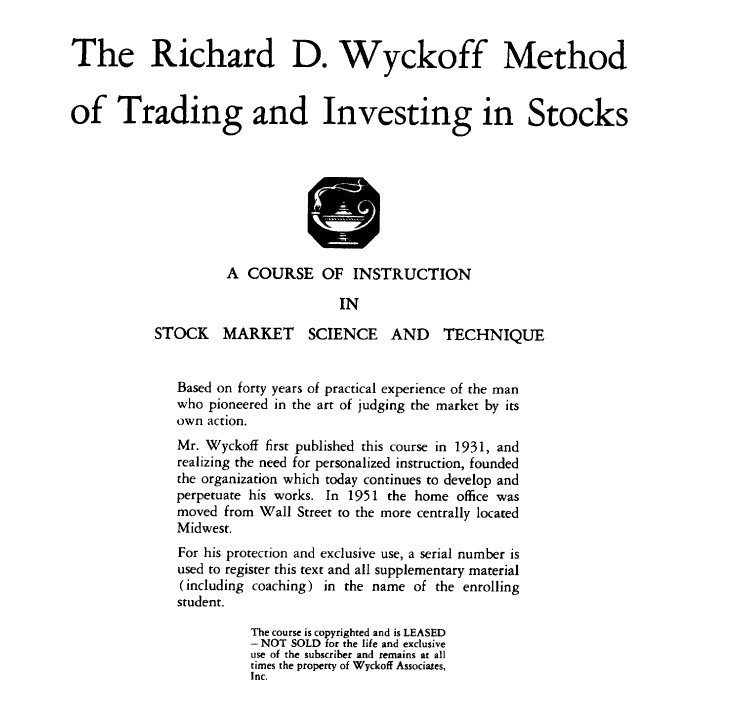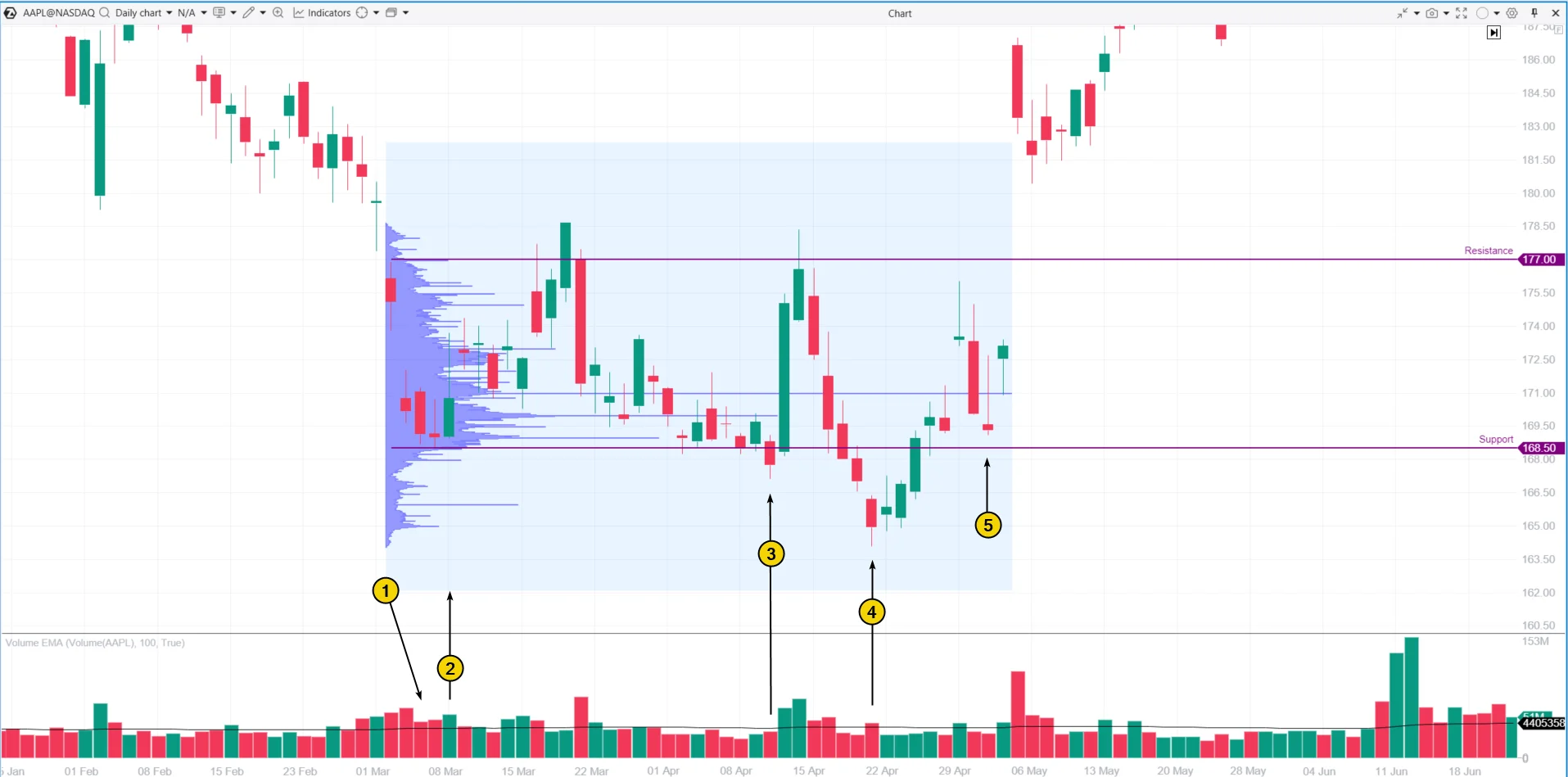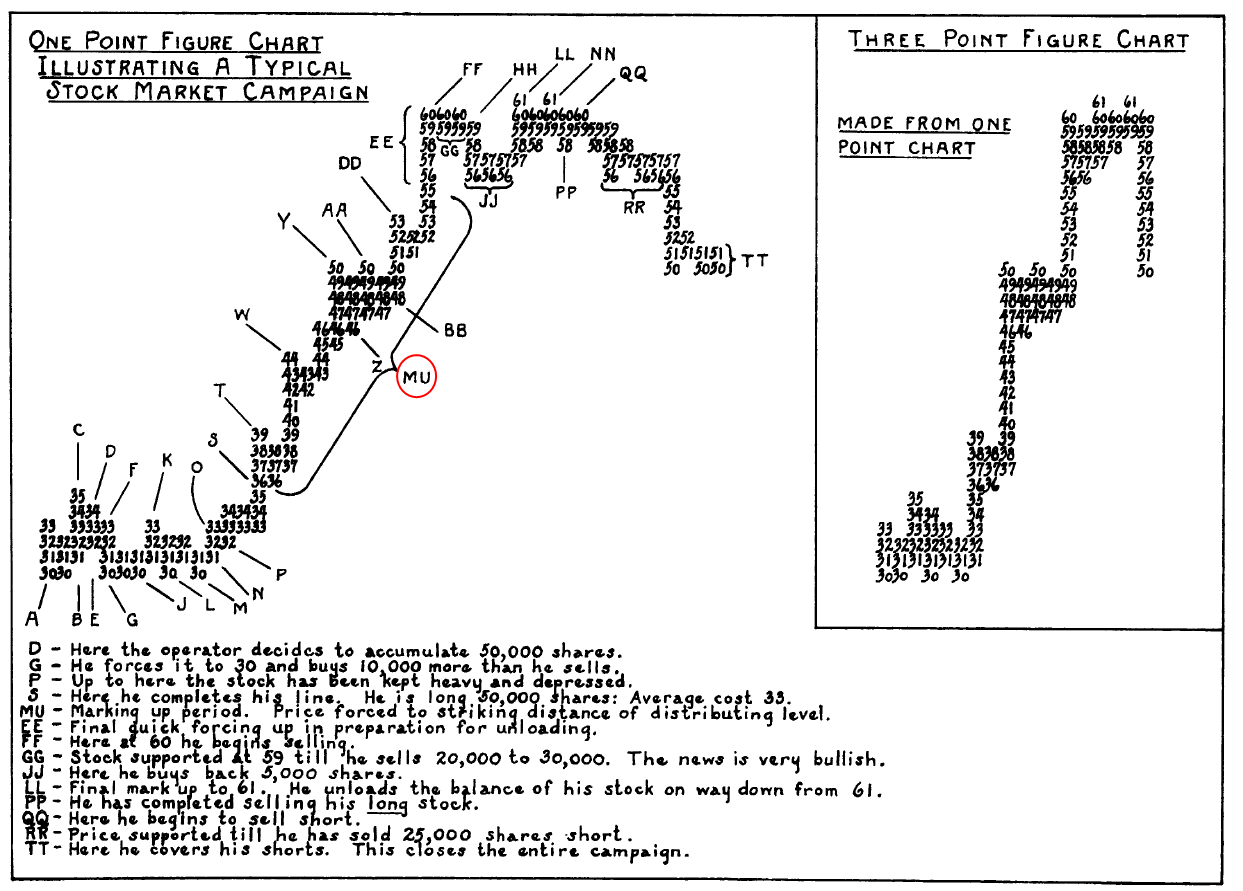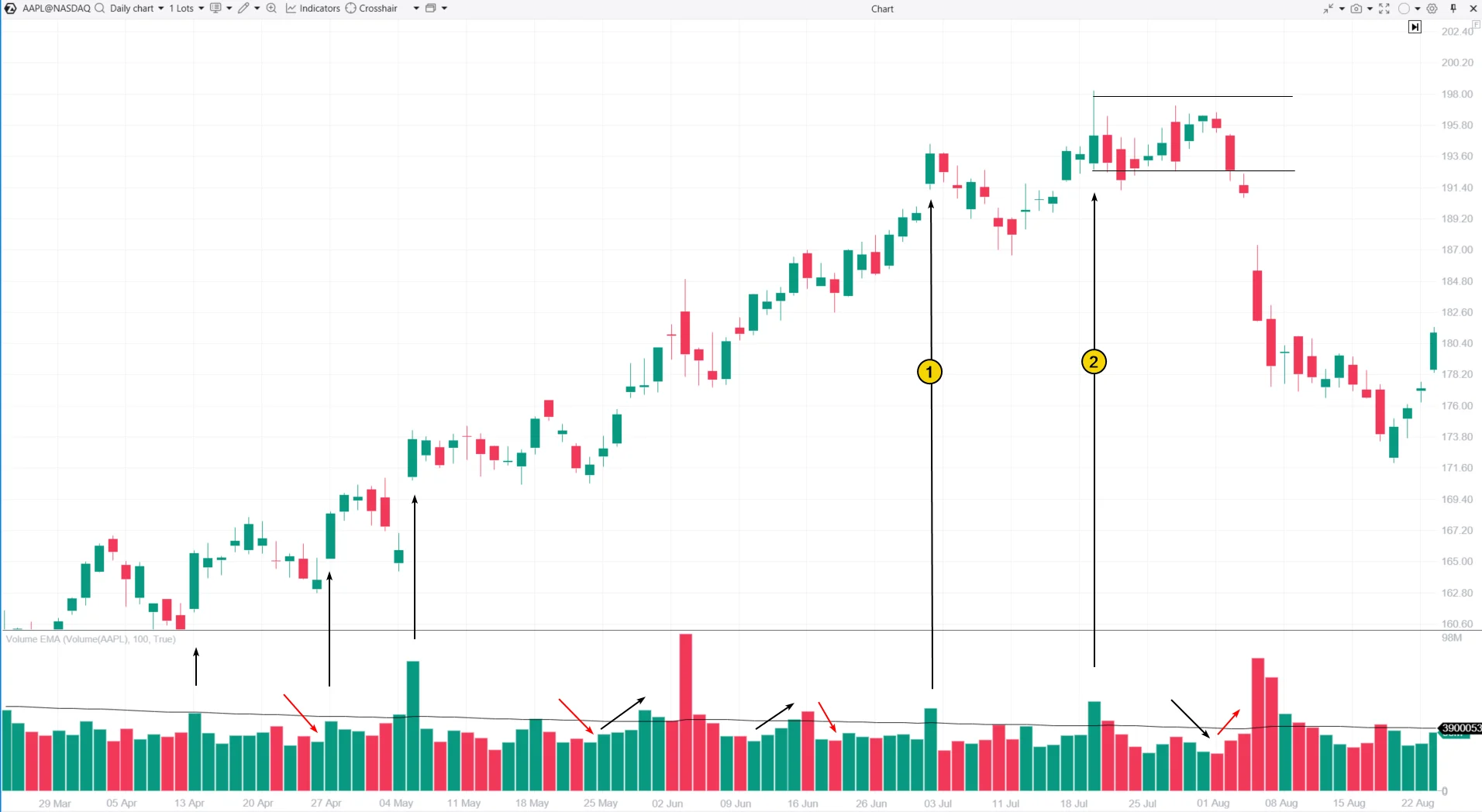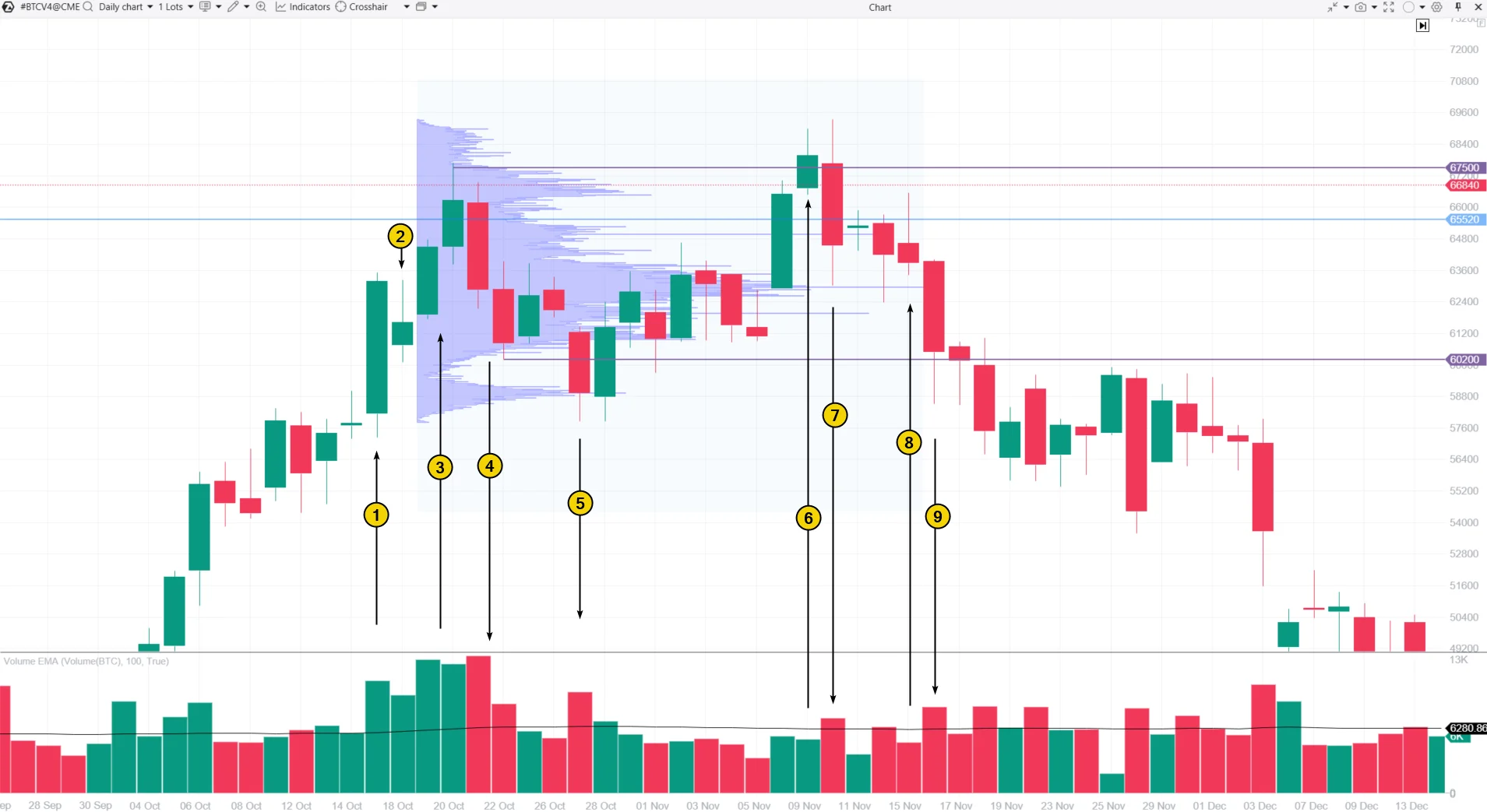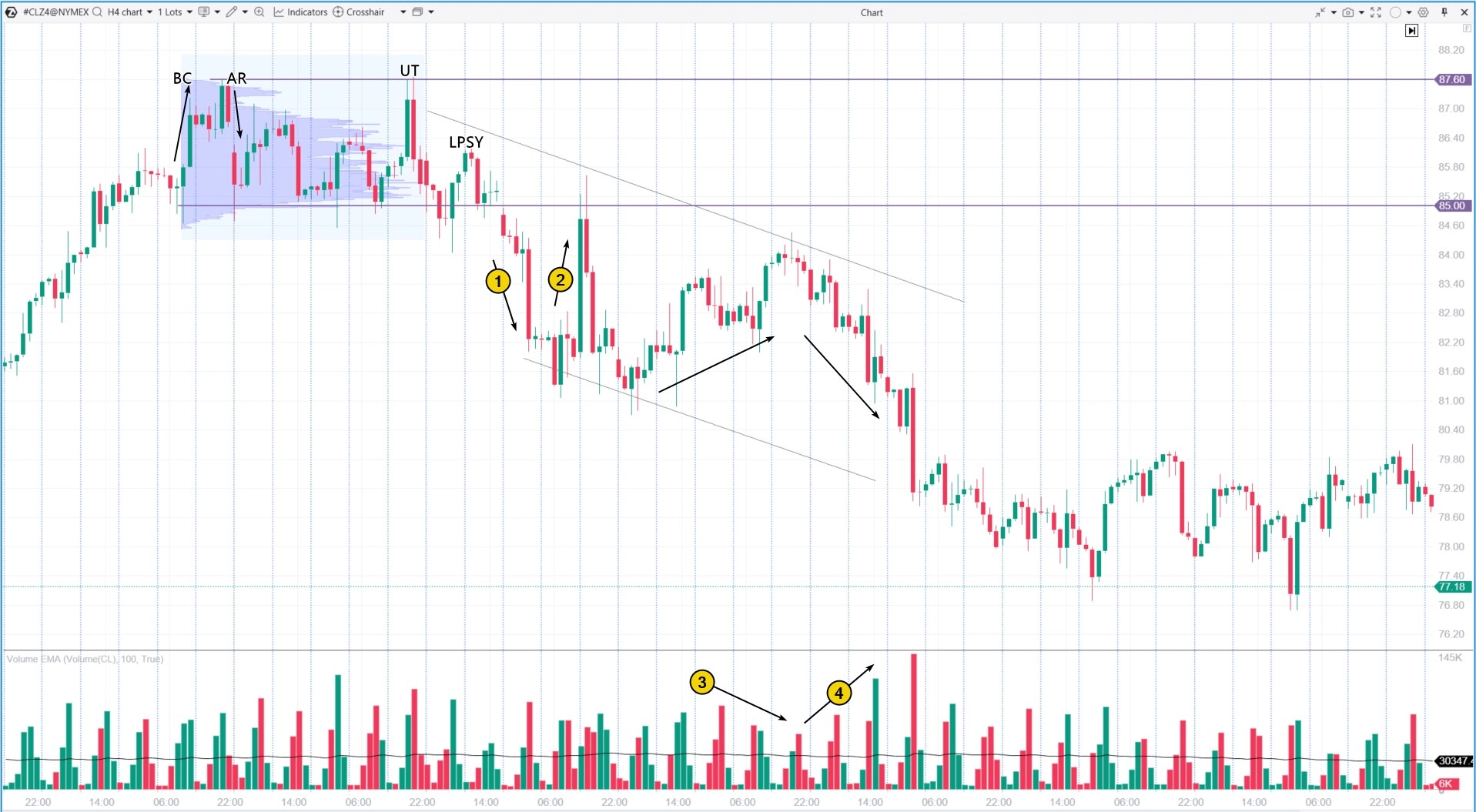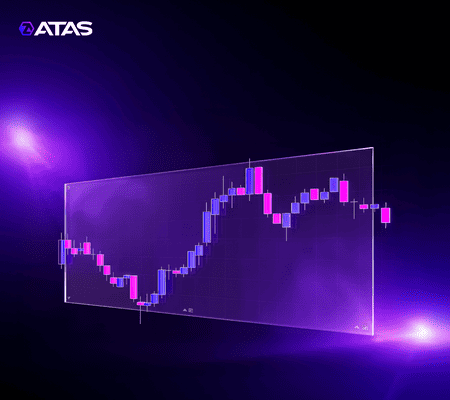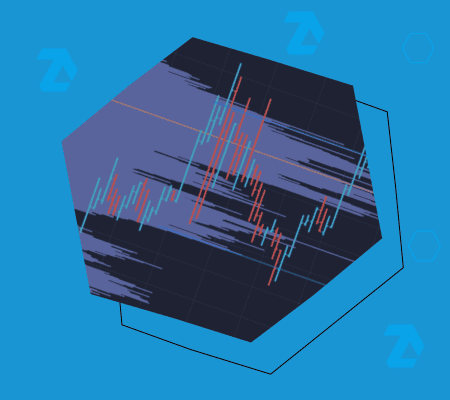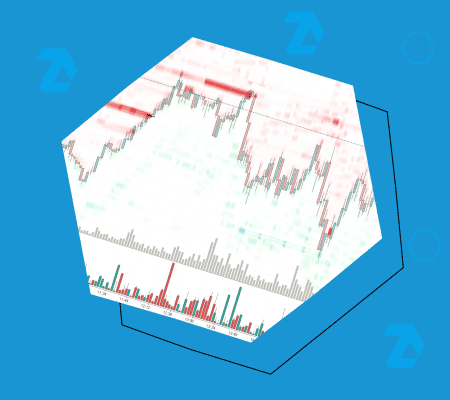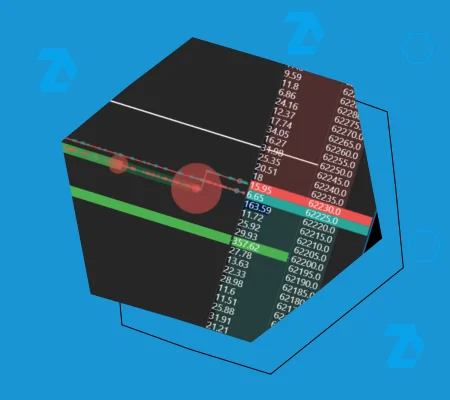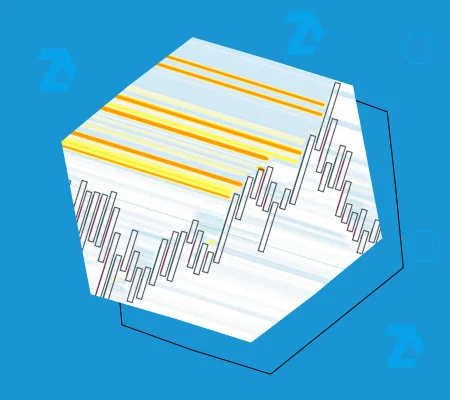(1) The price broke below $180 support, dropping with large bearish gaps and above-average volume. To identify panic selling (Selling Climax, SC) there, ideally, volume should have spiked to 2-3 times the average level. However, with a high-profile stock like AAPL, exceptions could occur.
(2) An Automatic Rally (AR) followed, with the price rising back to the level where aggressive selling had initially begun — signaling that the Composite Operator might have been accumulating shares.
On March 21, a wide bearish candle appeared with high volume. However, rather than continuing aggressively, the price was gradually declining between March 22 and April 10 with below-average volumes — a pattern typical of Phases B and C.
(3) Secondary Test, or Spring. Both terms describe a false breakout below a prior low. Following this, there was a sharp rally on April 11-12, but resistance remained intact. The Composite Operator seemed interested in accumulating more shares at that stage.
(4) Terminal Shakeout. On April 19, the market opened with a bearish gap. Seeing a new low and the stock’s struggle to rise above $177, the average investor faced intense pressure to sell, as the stock no longer appeared to lead the market. This encouraged them to sell the stock, which no longer seemed like a strong performer.
Once the Terminal Shakeout “encouraged” even more retail investors to sell, the stock began a rally, signaling the accumulation phase was nearing its final stages.
(5) Last Point of Support. The price pulled back roughly 50% from the rally between April 19 and April 29, then broke out of the accumulation phase with a strong bullish gap.
The added Market Profile indicator suggests the Composite Operator was interested in accumulating AAPL stock around $170, highlighted by significant bars on the profile histogram at this level.

